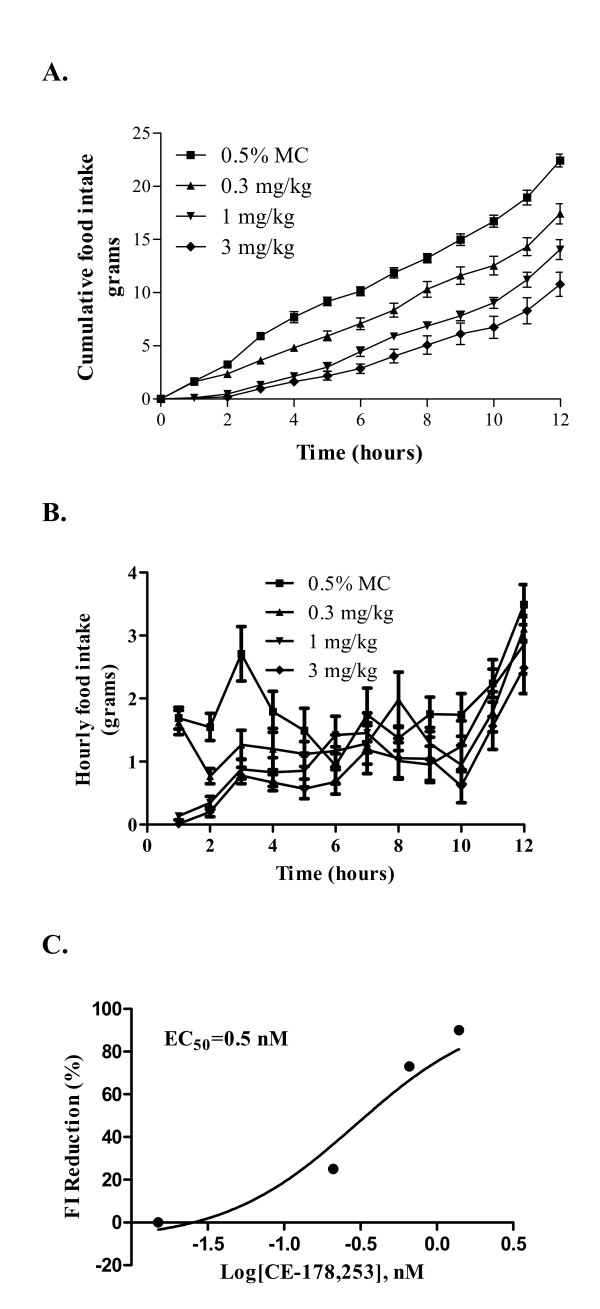Figure 3.
Effect of CE-178253 in S-D rats on nocturnal phase feeding in spontaneous FI model. 3A. Time and dose-response relationship of food intake efficacy of CE-178253. S-D rats were administered veh. (0.5% MC), 0.3, 1 or 3 mg/kg CE-178253 p.o. 30 min prior to the onset of the dark phase feeding cycle. Food was returned 30 min later and cumulative food consumption was measured for 12 hr. Data shown are the Mean +/- SEM, n = 8/group. All time points were statistically significantly different from veh. (p < 0.05) except for the 0.3 mg/kg one hr time point. 3B. Effect of CE-178253 on hourly food intake in S-D rats on nocturnal phase feeding in spontaneous FI model. S-D rats were administered veh. (0.5% MC), 0.3, 1 or 3 mg/kg CE-178253 p.o. 30 min prior to the onset of the dark phase feeding cycle. Food was returned 30 min later and hourly food consumption was measured for 12 hr. Data shown are the Mean +/- SEM, n = 8/group. All dose groups were statistically significantly different from veh. (p < 0.05) at 2-5 hr time intervals. In addition, the 1 and 3 mg/kg dose groups were statistically significantly different from veh. (p < 0.05) at the 1 and 6 hr time points. 3C. Concentration-effect relationship for CE-178253 in the spontaneous FI model at 2.5 hr post-dose. S-D rats were administered veh. (0.5% MC), 0.3, 1 or 3 mg/kg CE-178253-01 p.o. 30 min prior to the onset of the dark phase feeding cycle. Food was returned 30 min later and cumulative food consumption was measured for 2 hr. The EC50 corresponds to a 50% reduction at 2 hr after the start of the dark cycle feeding phase. Each data point represents the mean of three animals. * = p < 0.05 vs. veh.

